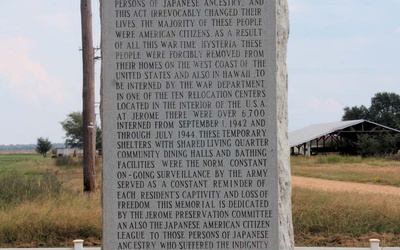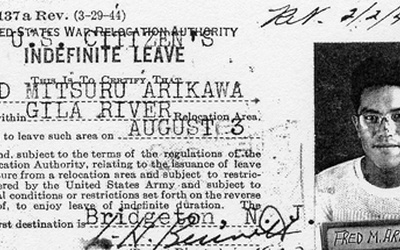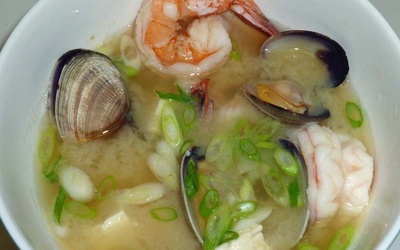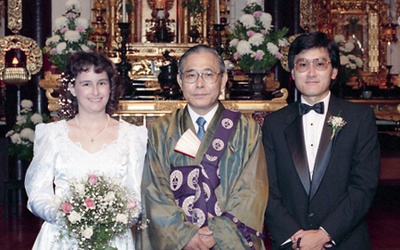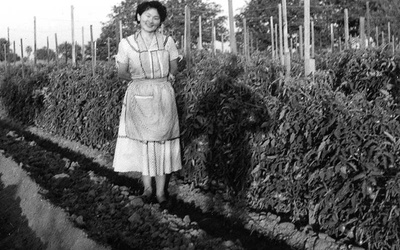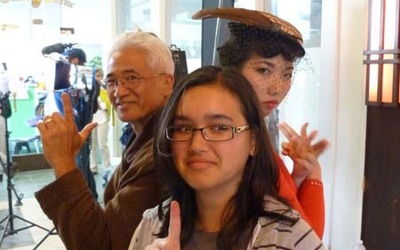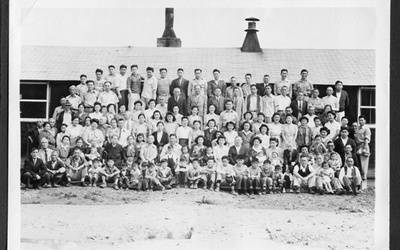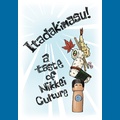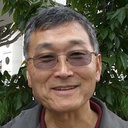
Ben Arikawa
@Ben_AriBen Arikawa é um Sansei do norte da Califórnia. Ele mora não muito longe de onde seus avós paternos se estabeleceram para trabalhar em um pomar há cerca de cem anos. Ben participou recentemente da peregrinação ao Lago Tule, onde conheceu Brad e George Takei. Mais tarde, percebeu que tem necessidade de contar histórias e vem explorando seu lado literário. Ben contribuiu com um artigo para o Pacific Citizen , o premiado jornal do JACL, e vários artigos para o Discover Nikkei . Suas histórias refletem suas experiências como nipo-americano, filho, marido e pai. Ele também está explorando seu lado artístico como diretor de fotografia na websérie da Ikeibi Films , Gold Mountain (2016), e como ator em Infinity e Chashu Ramen (2013).
Atualizado em agosto de 2016
Stories from This Author
Uma viagem a Jerônimo
24 de Agosto de 2016 • Ben Arikawa
Otousan , Obasan , Ojisan, como foi a viagem de trem? Meu pai, minha tia, meu tio e sua família viajaram cerca de 3.200 quilômetros de trem do Fresno Assembly Center, na Califórnia, onde foram encarcerados pela primeira vez, até o Jerome War Relocation Camp, que funcionou de 1942 a 1944. Mais de 70 anos depois, minha esposa e eu viajamos quase essa distância de nossa casa no norte da Califórnia até Little Rock, Arkansas, onde fomos convidados para um …
All My Friends, They Went to Tule
19 de Fevereiro de 2013 • Ben Arikawa
There are many untold and, possibly, forgotten stories in one’s family history. In an earlier article in the 2011 Holiday Issue of Pacific Citizen, the official newspaper of the Japanese American Citizens League, I wrote about what little I knew and what I didn’t know about my father’s incarceration in Jerome during World War II. Even before that article was published, I began to research the files of persons incarcerated in War Relocation Authority (WRA) camps that were available through …
Homemade Miso Soup
23 de Outubro de 2012 • Ben Arikawa
If you have been to a Japanese restaurant in the United States, you probably have been served a warm, salty, light brown miso soup. Sometimes it will have thinly sliced scallions floating in the broth. Sometimes there will be miniature cubes of tofu hidden in the depths below the particles of miso suspended in the broth. It is offered more as an afterthought, usually before a meal of overly large portions of protein or sushi. My daughter, Elizabeth, came back …
Mochi and Me
4 de Setembro de 2012 • Ben Arikawa
Mochi is a quintessential Nikkei food. Mochi is a symbol of our ties to our ancestral homeland, the land of small, terraced rice fields tended by family farmers. Mochi is made from rice. Not the typical rice you cook at home, but a glutinous rice that is very sticky when cooked. In the traditional method, the rice is steamed, ground and pounded by people wielding wooden mallets into a sticky dough. I have a very vague memory of my extended …
Two Weddings and a Funeral
4 de Junho de 2012 • Ben Arikawa
I’m not yet at the age where I scan the obituaries for people I knew, like I remember my father doing. In his later years, he would open the paper to the obituaries most days, looking for the names of acquaintances. I remember my father saying: “I was talking to Don the other day. Frank is gone. Don and I are the only ones left from camp now.” (Don and my father were roommates for a time in the Jerome …
Cooking Traditions with Mom
21 de Maio de 2012 • Ben Arikawa
I have been told by various people that I am a “good” cook. I’m usually able to put together dishes without recipes from whatever is in the refrigerator or to come up with menu ideas just walking down store aisles. Breakdown a chicken? Just give me the sharp cleaver. Need a grilled 20 pound Thanksgiving turkey instead of an oven roasted one? No problem. Need an easy appetizer for 20? Caramelized onion/pancetta quesadillas with guacamole. Sushi for six? Just let …
Will We Feel the Ghost of the Past at Jerome?
23 de Janeiro de 2012 • Ben Arikawa
14-8-C…A few years ago, this series of numbers and a letter were meaningless to me. Then I happened to find my father’s photo album that contain scenes stretching from his childhood in Japan to camp in Arkansas and Arizona and back to Japan where he married my mother in the 1950s. I don’t think that my brothers, sister, or I had seen any of these pictures and my father rarely spoke of his life before kids except for a typical …
The Accidental Actor: On Location with the Cast and Crew of Infinity and Chashu Ramen
6 de Dezembro de 2011 • Ben Arikawa
I have spent a great deal of my life trying not to be conspicuous. Maybe it’s the result of my painful lack of social skills when I was younger, my innate shyness in front of people, or maybe it was my mother’s entreaties not to stand out. Though born in Los Angeles, she lived in Japan during World War II. My mother was painfully aware of the incarceration of Japanese Americans, including my father, grandfathers, aunt, uncle, and cousins. She …
Reflections on a Road Well Traveled
31 de Agosto de 2011 • Ben Arikawa
My daughter and I recently took the 180 mile trip from Placer County, California to my hometown, Fresno. Most of the trip is made on Highway 99, which runs down the middle of the Central Valley. This is a drive that I know very well. During an eleven year span from 1988-1998, I made the trip once a month to check up on my mother. I separately visited my father since my parents had divorced in the mid-1980s. Since my …

